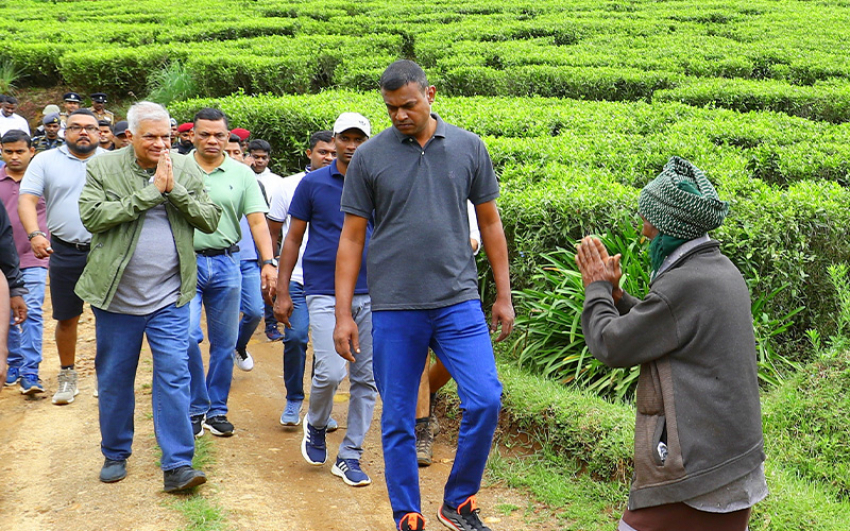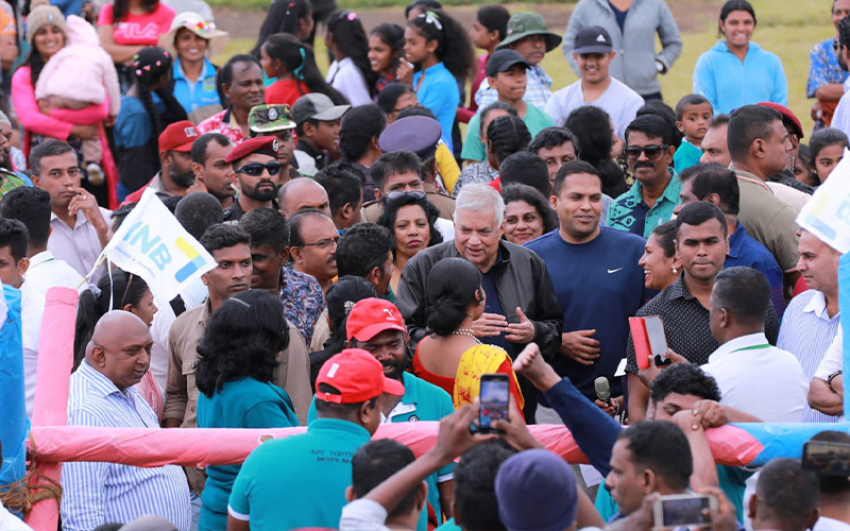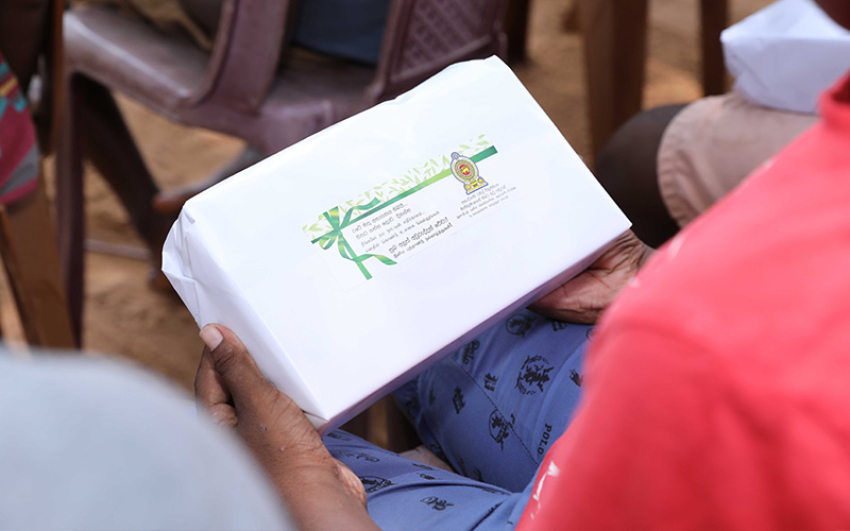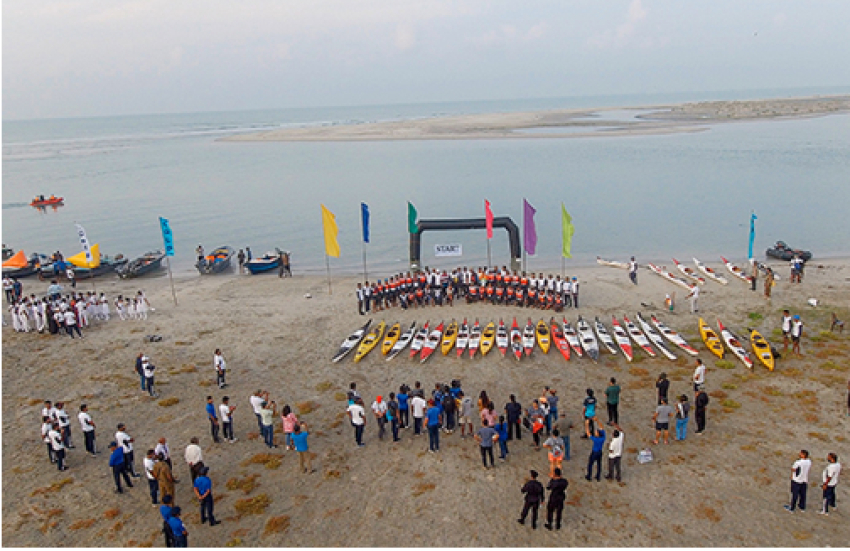Most people see weeds as a problem. But one farmer has found they can help make dry, damaged land lush again – not to mention absorb carbon from the atmosphere.
By Georgina Kenyon
More than 60 years ago, when he was a child, farmer Peter Andrews saw his first dust storm. He still remembers it. “The noise was horrendous,” he says. “We hid in the house waiting for it to pass. The whole sky was dark. And the damage we saw the next day was even more terrible.”
The wind had ripped many of the trees on his family’s property completely bare. Some of their horses and cattle asphyxiated, unable to breath in the dust.
That early experience has led him to a particular calling: trying to regenerate Australia’s land, since dust storms occur in hot, arid regions where there is little vegetation to anchor the soil.
“It really led me… to thinking about how to find solutions for keeping the land in balance,” Andrews says. “Over many decades I learned from observation how to keep the land fertile, how every landscape has its own natural system. Here in Australia, we have ravaged the landscape with European-style agriculture. We need to find a way to regenerate the land.”
In the 1970s and 1980s, Andrews became interested in sustainable agriculture. He looked at the waterways and the plants that were growing on his property and tried to avoid fertiliser and weed killer. He wanted to make the farm as resilient to the weather as possible.
One major issue was drought. Another was that weeds were growing on the property, while native plants weren’t.
You might also like:
• The ‘miracle mineral’ the world needs
• How to use seawater to grow food – in the desert
• The wild seeds that could save civilisation
He had two major realisations. First, plants are fundamental to keeping the land in balance. Second, so is water.
Every landscape, he saw, has its own contours – a point where water originates from, and a point to which it flows. To regenerate an eroding landscape, you start at the highest point, slow down the water flow, then work downwards, filtering the water with whatever vegetation there is, he explains. This was the genesis of his idea of natural sequence farming.
Weeds for water
Climate change and land clearing have driven soaring temperatures and extreme weather events in Australia
It has been the driest and hottest year on record for most of Australia. One recent scientific report outlines how the last summer in Australia was characterised by “prolonged, continental-wide heatwaves and record hot days, bushfires throughout Australia and heavy rainfall and flooding in northern Queensland”. Climate change and land clearing have driven soaring temperatures and extreme weather events in Australia, the report says, and “the past four years have been the four hottest years on record for global surface temperature”. Many people, unable to grow crops or feed cattle or sheep, are leaving their farms as a result.
Research from Australia’s Nature Conservation Council (NCC) also warns about deforestation in Australia, especially in New South Wales “on a scale we have not seen for more than 20 years", says NCC chief executive Kate Smolski.
The NNC report explains bulldozing forests means there are fewer trees to “make rain, cool the weather and store carbon”.
It is because of these intense, and worsening weather, conditions and deforestation that Andrews calls Australia “the laboratory for the world when it comes to adapting to the weather”.
Natural sequence farming has four main elements. First, restore fertility to improve the soil; second, increase groundwater; third, re-establish vegetation, including with weeds if necessary; fourth, understand the unique needs of a particular landscape.
Andrews’s ideas aren’t universally accepted. For decades, he was been seen by many as a maverick. He is not a scientist, and it took until 2013 before scientific evidence showed that natural sequence farming can be effective.
Some critics question if better land management and avoiding destructive farming methods (such as cutting down trees) would make the need for natural sequence farming necessary in the first place. Others disagree with his suggestion to use weeds: conservation projects usually promote planting endemic Australian plants, rather than allowing invasive weeds to grow, as they are thought to compete with native plants for scarce water.
But a pilot site of natural sequence farming, located an hour’s drive east of Canberra, seems to be proving that Andrews’ ideas about weeds can work – if only on a small scale so far. The pilot site is a 6km stretch of Mulloon Creek, which runs through a network of organic farms now using and promoting Andrews’ work.
The United Nations’ Sustainable Development Solutions Network announced in 2016 that the Mulloon Creek Natural Farms are one of the few farming sites in the world that are truly sustainable
The United Nations’ Sustainable Development Solutions Network announced in 2016 that the Mulloon Creek Natural Farms are one of the few farming sites in the world that are truly sustainable, and commended the model of natural sequence farming.
At Mulloon Creek, I meet Gary Nairn, chairman of the Mulloon Institute, a research and teaching organisation for regenerative, sustainable farming that promotes Andrews’ work. He points to the invasive blackberries that his team cut down; the cut down and chopped up shrubs now are clogging up part of a pond, helping to filter it. The sound of running water and small birds fills the air as I get closer.
The Mulloon Institute, which is based in a barn next to a pond that has been named after Andrews, teaches natural sequence farming methods to farmers, scientists and university students. The Mulloon Institute is also working with several Australian universities to monitor the water along the creek, done with piezometers (water measuring equipment) installed by scientists from Australia National University and the University of Canberra.
“The scientists have shown that natural sequence farming does increase water flow, raising the water table,” explains Nairn.
His team is now working on a further 43km of creek running through 20,000ha of farmland to construct more weedy, leaky weirs, like a dam wall, across the creek. The weirs are made from stones; the cracks between the stones are filled with chopped-up blackberry weeds to filter and slow down the river’s flow.
Despite so little rain, the creek now is running again and pastures that once were arid soil, eroded from the drought, are turning green. This is because the weirs are working, letting the soil absorb more moisture enabling plants to grow along the banks.
“The weeds and weirs take the energy out of the water, rehydrating the landscape,” Nairn says.
The whole process is a bit like creating “giant sponges with weeds”, he says.
What we have learned is never to pull out a weed until you know what purpose that weed was fulfilling – Gary Nairn
“What we have learned is never to pull out a weed until you know what purpose that weed was fulfilling. A lot of weeds usually means there is something wrong with the fertility of the land. If you pull it out, you need to replace it with another plant,” he says.
But those weeds can be chopped up and put into a creek such as at the pond outside the Mulloon Institute.
According to Nairn, in this way, native Australian plants will slowly grow back. Indeed, some are already doing so along the creek.
Carbon sink
The beauty of weeds is that they also act like a carbon sink: a system that takes carbon out of the atmosphere and puts it into another form of storage. These can help to control climate change.
“Forests, oceans and soils can all remove carbon dioxide from the atmosphere and store it,” says Christa Anderson, a climate researcher from the World Wide Fund for Nature in the US.
Anderson explains that the amount of carbon dioxide a given ecosystem can absorb depends on where it is and how it is managed.
There are a large number of farming practices that can also increase carbon storage – Christa Anderson
“While forests have the largest potential for additional carbon storage and therefore can help mitigate the emission of carbon dioxide and other greenhouse gasses, there are also a large number of farming practices that can also increase carbon storage,” Anderson says.
“We need to remove carbon from the atmosphere by improving forest management, protecting and restoring wetlands, peatlands and seagrass, and improving our farming.”
Some scientists are now wondering if even small projects like the one at Mulloon Creek could work as a carbon sink to restore habitats, if enough famers also make “giant weed sponges”.
"When you hold water in the landscape, you put carbon back in the landscape, too, and make it more productive and sustainable," Nairn adds.
This is important because so much forest is being cleared for massive scale agriculture that carbon sinks are being lost. Swathes of northern New South Wales and Queensland have been made arid from land clearing for massive farms. But, gigatonne for gigatonne, soils and plants hold twice as much carbon as the atmosphere – so more plants, not fewer, are needed to absorb our increasing production of carbon from burning fossil fuels.
The question is whether smaller projects like this will be enough to bring farms back to life, given the huge rates of deforestation and soil degradation.
Nairn believes there’s reason for optimism. “You just need the will to do it,” he says. “What we are proud of is that we are giving young people hope with natural sequence farming – hope that you can still live on the land if you manage water and plants better.”
Peter Andrews agrees, though he adds that he always disliked the term natural sequence farming.
“The name annoys me. It’s just really observing the landscape and returning it to what it used to be, to the best of your ability. Every plant has a purpose.”
While world leaders debate if, when and how carbon emissions should be cut, one sustainable farm at Mulloon Creek in Australia is proving low-tech weeds can help to sink carbon and make a river run again. It’s a small
Deposits of rock phosphate, the raw material that is mined, are unevenly distributed
In Depth Agriculture Africa
The ‘miracle mineral’ the world needs
You can’t grow crops without phosphorus. To get it, farmers often rely on expensive, frequently unavailable fertiliser. But there could be a better – and easier – way.
By Sibylle Grunze and Kerstin Hoppenhaus in Malawi
4 February 2019
In Blantyre, Malawi, a group of farmers are assembled around a pile of material that could help shape Africa’s future. It doesn’t look like much: a two by two metre pile of alternating layers of moist organic matter like corn stalks and chicken manure.
But over eight weeks of microbial activity and periodic turning, the unwieldy, slightly smelly mass will transform itself into compost – a low cost way to improve soils and reduce dependency on mineral fertilisers, which are at best expensive and at worst often not available at all.
"This is not your ordinary backyard compost pile, where you throw your kitchen scraps," says Johann van der Ham, who runs the demonstration farm, as he watches his students watering the next load of manure in a wheel barrow.
"It's a thermic compost pile. We teach how to build it systematically and to scale it to the needs of every farm.
You might also like:
• The women saving Africa’s wildlife
• How to use seawater to grow food – in the desert
• Zimbabwe’s cure for depression?
The farmers learning how to make this compost, and the other people in their communities that they will bring this information back to, are smallholder subsistence farmers.
Explore the compost workshop with our 360 video below:
“For them, one failed harvest means hunger and misery – or worse,” says van der Ham. “So for them, improving soils is not an add-on, not just something to raise the bottom line.
“It's a matter of survival.”
Fertiliser’s future
Most African soils are inherently poor. Over millions of years, younger, more fertile layers have weathered away, leaving large parts of the ancient shield exposed. In sub-Saharan Africa, widespread maize monoculture has depleted soils further.
To grow properly, plants need water, light and air. They also need nutrients from the soil, including nitrogen, potassium, and phosphorus. All of these are important – but phosphorus especially, because it affects the plant early in its life. The plant needs it to build its root system, which is the basis for taking up other nutrients. Without enough phosphorus, plants are stunted and yield little.
Putting phosphorus back into the soil in Africa, therefore, is particularly important for farmers – and, by extension, for much of the population: eight out of 10 Malawian workers are employed in farming.
Watch local women shuck maize in our 360 video below:
These days, most phosphorus in agriculture worldwide comes from mineral fertilisers. But the future of these mineral fertilisers has become uncertain.
The first phosphorus price shock came in 2008, when the commodity price of rock phosphate, the raw material that is mined, spiked 800%.
"That's when people started to pay attention," says Dana Cordell, a research director at the Institute for Sustainable Futures at the University of Technology Sydney and co-founder of the Global Phosphorus Research Initiative. She is studying how Malawi can adapt to the emerging phosphorus challenges. "Before 2008, phosphorus was pretty much taken for granted.”
Since then, there have been several assessments of global rock phosphate reserves, with widely differing results. Estimates for when “peak phosphorus” will occur – the moment just before extraction will begin to decline, thanks to depleted high-quality reserves and higher costs of mining the remaining deposits – range from 30 to 300 years. (The numbers vary because of different judgments about quality of deposits and progress in extraction technologies, and because many producers keep a close lid on their data for fear of tipping off the competition.)
But even if there may be enough phosphorus to last centuries, there are other problems with relying on it – like the very uneven distribution of its deposits. "Phosphate resources are more geopolitically concentrated than oil," Cordell says. "While all countries and farmers need access to phosphorus, only five countries combined control 88% of remaining phosphate reserves." Morocco alone has 75% of estimated global reserves, some of it in the disputed territory of Western Sahara.
For importing countries, this supply concentration creates both a short-term business risk and a long-term national security risk, Cordell warns.
The situation is especially problematic for a small landlocked nation like Malawi, which is entirely dependent on imports – making it vulnerable to global price spikes and a difficult world market.
Making matters more difficult, for fertiliser to be helpful, it needs to be bought early in the season – but they won’t know at that point if other factors, like weather and pests, will work out. They may spend their little savings on fertiliser only for pests to ruin the crop late in the season. As a result, for many farmers, each bag of fertiliser is a gamble. Each time, they have to ask themselves whether buying phosphorus is worth the risk.
See farmers shopping at a fertiliser store in our 360 video below:
To help farmers access fertiliser, the Malawian government launched a comprehensive subsidy programme in 2005. Coinciding with favourable weather, it brought some improvement in its first years. But over time, yields have stagnated.
The solution to Malawi's phosphorus problems, it turns out, requires more than just pouring mineral fertiliser onto the land.
Compost chemistry
The problem is chemistry. The soils in Malawi and in much of sub-Saharan Africa are acidic. This means most phosphate ions quickly bind with iron or aluminium oxides and are no longer available for plants.
This means that, even when there is a lot of phosphorus around, much of it is practically useless for agriculture. As a result, before mineral fertilisers can be fully effective, the structure of the soils needs to change.
A mineral fertiliser can’t do that. But compost can.
That is because compost can do something that mineral fertiliser cannot. It doesn't just provide phosphorus and other vital nutrients – it can also restore the soil structure by adding organic matter.
Healthy, productive soil is not just dirt with some nutrients; it is a living ecosystem, explains van der Ham. And keeping this ecosystem alive means keeping enough organic matter in the soil to keep microbes, mites, fungi, worms and assorted other critters who live there happy, well fed and able to do their jobs. One of their jobs? Solubilising – which means freeing phosphorus and other nutrients from their bonds and making them available for plants.
Back at the workshop, van der Ham is trying to drive the point home. "How many people live in Malawi?" he asks. The answer is about 19 million.
"You see," he says with a smile, "there are more organisms in a teaspoon of healthy soil than there are people in all of Malawi."
Van der Ham practises what he preaches. On his own fields, he hasn't used mineral-based fertiliser for over six years. Instead, his crops get all their phosphorus and other nutrients from compost, manure, and mulching.
Ease of access
There is also yet another benefit of compost compared to mineral fertilisers: it is more accessible.
Billy Bray leads the Malawi branch of a Dutch NGO called Waste, which focuses on sanitation. "We need to generate value from waste," he says, "so we create new sources of income, and discourage illegal dumping and other practices. And compost is a very valuable product here." His group works closely with Blantyre’s city government and is currently building a pilot facility at one of Blantyre's water treatment plants. "Our idea is to reduce the risk for local entrepreneurs. If we can prove that compost can be profitable, that there is a market, others will follow," he says.
But raising awareness about the issue isn’t always easy.
"Nutrient recovery is not on people's mind at the moment," says Emmanuel Kanjunjunju, Blantyre’s director of health and social services. "They have so many other problems. But as the city, we have to think ahead. You can't work in a crisis. You will always be failing. These systems have to be planned 10, sometimes 30 years ahead…
"It's difficult in the sense that you have a current situation, where you just want to address the problems of today. But people forget: for these problems to reach the way they are today, it may be because we did not plan.”
At the moment, the team from Waste is building drying beds for fecal sludge. In the end, the dried sludge will make up about 5% of the finished compost. The rest comes from market waste, like spoilt fruit and vegetables, as well as chicken manure from a nearby poultry farm.
The NGO’s goal is to produce about 1,000 tonnes of compost per year for the wholesale market. "The smallholders won't buy from us," says Bray. "But they will follow the example of the big farmers once they see the results."
"Technological fixes alone won't solve the phosphorus problem," says Johan Six, professor for sustainable agroecosystems at ETH Zürich. "We need a much more integrated approach to the way we do farming."
Explore a local market in our 360 video below:
He and his colleagues are analysing how farming methods like agroforestry, intercropping and conservation agriculture affect the composition of soils. "We have known for a long time that these methods can be beneficial for the nutrient balance in soils," Six says.
But until recently, the focus has been mostly on nitrogen and carbon. "Phosphorus availability is much more difficult to measure and has been somewhat neglected,” he says. “This is beginning to change, but there is still a lot we don't know about how phosphorus is actually behaving in the soil." This information will be vital if these new methods are to be deployed at a larger scale.
In Malawi, Six and his colleague Janina Dierks study the effects of faidherbia trees, a local type of acacia, on maize. The farmers like these trees because the plants shed their leaves during the rainy season, so they compete less for sunlight with the crops. Faidherbia trees have rich communities of symbiotic mycorrhiza, fungi that live in the root system. Greenhouse experiments show that the tiny organisms facilitate the uptake of nutrients like nitrogen and phosphorus not just for their hosts, but for other plants, too.
Six and Dierks want to find out if this is true in the field as well – and if so, to what extent.
Ultimately, to manage phosphorus sustainably, one has to consider the entire system: from microorganisms to trees, local farmers to fertiliser manufacturers, regional governments to global traders.
"And to be able to do this, you have to know what goes where," says Frank Mnthambala, a PhD student at the Malawi Polytechnic at the University of Malawi, who works with Dana Cordell and other scientists.
Mnthambala is currently tracking the flow of phosphorus through the Malawian system. He notes that there are many unused sources of phosphorus in the system – like fecal sludge, runoff from fisheries or different kinds of compost. "But nobody has ever quantified them before," says Mnthambala, and without being quantified, it’s hard to prioritise which ones should be tapped into.
Once Mnthambala has found the most promising sources for phosphorus recovery, figuring out how to access them will be his next step.
Inside the greenhouse, tiny leaves of wild rocket, iceberg lettuce and pak choi poke through the dirt, each as small as a fingernail. Planters hold calla lilies and dragonfruit, sea samphire and gerberas. Bright strawberries dot buttery green leaves. And there are row after row of vines, draped over wires, leaves as big as dinner plates: snack cucumbers and fragrant basil and nine varieties of tomatoes.
“My basil’s a bit straggly,” head grower Blaise Jowett says, apologetically. “But I’m keeping them for pesto.”
He shouldn’t be too apologetic. Outside of the greenhouse, a camel grazes. Pale pink sand extends to the rocky mountains in the distance. Only the hardiest tufts of green thrust up through the ground. There is no water. There are no trees.
This spot in the Jordanian desert, just a kilometre from the Israeli border and 15km inland of the Red Sea, may be one of the most surprising places on Earth to start a farm. It’s also one that, in some ways, makes perfect sense.
You might also like:
• Are hot springs the future of farming?
• How to save Louisiana from drowning
• Norway’s electric aircraft revolution
By 2050, the Food and Agricultural Organisation (FAO) has said, food production needs to be increased by 50% to match the projected increase in population. That won’t be easy. “The challenge is to produce this amount of food within the boundaries of this planet, with a limited number of hectares of arable land – while knowing that a lot of the land and the soil is getting degraded,” says FAO emergency and rehabilitation officer Sylvie Wabbes-Candotti.
We’re facing other global challenges, too. Climate change, for one. And in many countries, including Jordan, a lack of water. And to make matters thornier, each of these issues impacts on the other. Currently, food production consumes about 70% of global freshwater consumption and emits 25% of greenhouse gases. Simply upping how much food we’re producing – without changing how it’s done – will make emissions and water usage worse. Meanwhile, as climate change and water shortages get more severe, the more difficult it will be to produce food with the same methods we use today.
“You can’t see climate change as an isolated challenge; it is connected to water and food production,” says Joakim Hauge, president of the Sahara Forest Project Foundation, the organisation behind the Wadi Araba project. “You need to progress those issues together with tackling climate change. Our response to that was, well, let’s take what we have enough of to produce what we need more of.”
Triple axle
One resource Jordan needs more of is water. The second most water-poor nation in the world, it has less than 150 cubic meters of water per person, per year. (The US has more than 9,000). Part of the problem is that the country is three-quarters desert. Another problem is agriculture. Farming sucks up half of Jordan’s water supply, but contributes only 3% to the country’s GDP. (Read more about one surprising solution Jordan is using to solve its water crisis).
What Jordan does have is sunshine – and plenty of it. On average, the country gets an average of between 5 and 7kWh of solar energy per square meter. That's enough to power 14 traditional light bulbs for eight hours, 14 washing machines to each do a load of laundry or, perhaps most relevant for Jordan, one air conditioner for four hours. It’s one reason why the US government’s International Trade Administration calls renewable energy one of Jordan’s best-prospect industries.
Jordan also has seawater… sort of. Though mostly landlocked, with its access to the Mediterranean separated by Israel and Lebanon, 26km of the country borders the Red Sea. That isn’t much coastline – but with the approach being taken by the Sahara Forest Project, that may be all it needs.
The project’s concept is elegant in its simplicity: Jordan’s solar energy desalinates the seawater, the desalinated water grows the crops (and the run-off cools the greenhouse) and the crops help plough carbon from the atmosphere back into the soil. Three tentpole challenges, tackled at once.
And along with being a sustainable use of resources, the project could bring another benefit. Once scaled up and commercialised – and especially if its methods are adopted by other farms in the country – it could give Jordan another list of valuable exports. Currently, the country imports 98% of its food.
“Jordan is dependent on food imports,” says Wabbes-Candotti, who works across the region but isn’t involved with the Sahara project. “Water is really the shortage. If you cannot depend on the rain, but have a reliable water supply with this desalinated water, then if you have adequate funding, and master the techniques… you can go produce food and even become an exporter of food.”
Arriving at that point will be a little more complicated. The project is only a year old, having launched in September 2017. The greenhouse and its surroundings, where Jowett is experimenting with growing other plants, currently adds up to an area of about four football fields in size. This is just the pilot stage. The total land they own is 200 hectares. Once they’ve proven that the concept works, the idea is to scale up to 10 hectares by 2020, then to 20 hectares.
No-one doubts there will be a number of challenges ahead.
But even now, the team has already started tackling the difficulties of just how you use desalinated water to grow crops in the inhospitable desert.
Hot house
On the spring morning when I visit, the outside temperature is around 30C. Managing that heat is one of the crucial aspects that the project has had to master. Inside the greenhouse, where three young men plant cucumber seedlings in neat rows, the temperature hovers around 25C. Even so, Jowett points out the plants growing nearest to the greenhouse walls: those too close got too hot and died and the next round of plants will have to be moved further away.
With Jowett and facility manager Frank Utsola, I walk around the back of the greenhouse to the separate cooling room. The system is switched on: within what feels like moments, the air feels markedly more comfortable. The system can lower the temperature in the greenhouse by about 15C. In a region where summer days can get to 45C, unmanageable for even the heartiest of vegetables, this is key.
How it works “is very easy to explain”, says Utsola. Salt water is pumped into a pipe that runs along the top of the wind-facing wall. The wall is covered with a sort of ‘blanket’ that draws the water down; when the wind blows through, the water evaporates, cooling the air. (It works the same way as hanging a damp towel in your house on a hot day). At the same time, the heavier salt is left behind.
Although they can turn on solar-powered fans instead of relying on the wind, they normally don’t have to; most of the time, the wind sweeps through the valley from the north – a direction the cooling room has been built to take full advantage of.
The team is the first to admit that none of this is an innovation on its own. Utsola points to the ‘blanket’ that lines the cooling room: Bedouins have used carpets like this to cool their tents for centuries, he says. Of course, solar power and desalinisation techniques aren’t new, either.
“A lot of these are well tested environmental technologies,” says Hauge. “The new thing about this project is how we combine them.”
Heat isn’t the only thing the plants have to contend with. At night, it can get down to 7C. When that happens, the pipes in the ceiling hold water which is warmed by the sun during the day. When it is piped into the plants at night, it gives them a warm bath.
Meanwhile, the plants inside the greenhouse are given more water than the roots can absorb; the extra run-off collects in tanks at the end of the greenhouse. Jowett is using it to experiment on the plants outside, where he has divided the soil into plots for varying levels of salinity to see how much, if any, is okay. This is a work in progress, too. Of 864 plants outside, 49 have died. Some he’s growing just to help nourish the soil. “Here I’m trialling this, which is called a field bean. And this is clover, so green manure,” he says. “I just want to let it grow – they’re legumes, they fix nitrogen into the soil. Further on, we dig them in and incorporate them into the sand. They’ll decompose and improve the soil and the water holding capacity and add a bit of nutrients.”
Further on, he picks a piece of wild rocket for me to taste. “It’s pretty peppery,” he says. I pop it in my mouth. It’s extremely peppery – though some of the shock of the taste is owed to the surprise of knowing where it was grown.
Pipe dream
Even if the team is mastering how to grow crops in a desert, there’s one stumbling block they haven’t yet overcome: how to carry the seawater 15km from the Red Sea to the site. At the moment, it’s being brought in by lorries every two days. That’s not exactly a carbon-neutral approach, and it won’t be sustainable when the project expands.
“To scale up ops, we will need a pipeline from the sea pumping in the seawater. That is what we are now working to finance,” says Hauge. The problem isn’t digging a trench. It’s getting access to the land to do so. One option is for the pipe to take the same route as the long-planned $10 billion conduit planned to siphon water from the Red Sea to the Dead Sea, though the project has been mired in difficulties for years. Or it could go beneath the main road close to the greenhouse, the Jordan Valley Highway, but that cuts through areas owned by a variety of stakeholders, from government to private citizens.
Still, the team is optimistic. They’re currently preparing studies to show how a pipeline could create value not only for a commercial-scale Sahara Forest Project, but for the rest of the community, such as by creating job and business opportunities. The level of support for the project – including, crucially, endorsements from the royal family and royal courts of Jordan – mean they have reason to think it may move forward, perhaps with a pipeline beginning as soon as the end of 2018.
Even putting aside the political and bureaucratic challenges that pertain to the pipeline alone, the idea of turning this swath of desert into a 20ha collection of greenhouses and gardens is more than a little bit surreal. But as the team says, the technologies here are all proven – and already being used in tandem here in the desert. Most persuasive of all, though, are the cucumbers that Utsola gives me as a parting snack, grown from the vines in the solar-powered greenhouse: they are crisp, delicious and very much real.
Accessibility links
Skip to contentAccessibility Help
Sign in
News
Sport
Reel
Worklife
Travel
Future
More
Search the BBC
Search
Search the BBC
Future
What is BBC Future?
Latest
Best of..
NEW SERIES
Follow the Food
TOMORROW'S TRENDS
Future Now
(Credit: iStock)
In Depth Agriculture
Can wild seeds save us from food apocalypse?
Around the world, botanists are battling to find rare wild seed strains before they die out – helping ensure food supplies that can survive the perils of climate change.
By Eloise Gibson
17 October 2016
Trapped by Hitler’s soldiers during the brutal winter of 1941-42, a band of Russian botanists faced a terrible choice.
For more than a decade, workers at the Vavilov Institute of Plant Industry had been gathering seeds from all over the world and carefully preserving them in a locked vault. They believed they held the raw materials to allow scientists to breed the super plants of the future, crops that could survive anything nature could throw at them.
The Institute’s founder, Nikolai Vavilov, had spent years collecting rare and wild relatives of wheat, rye and other staples so crop breeders could mine their hardy genes. Now the Nazis had laid siege to Leningrad (now St Petersburg), preventing the institute’s workers from leaving the city. So the botanists barricaded themselves in with the stash, preparing to defend it from rats, freezing weather and desperately hungry citizens.
Lesser scientists would have eaten the precious packs of rice, wheat, peas, oats and potatoes during the 28-month siege. Instead, Dmitri S Ivanov, the head of the rice collection, a bespectacled man with fine, side-parted hair, painstakingly conserved several thousand packs of rice while gradually succumbing to malnutrition.
Eight of his colleagues also died of cold and hunger while protecting their specimens, some of which they managed to smuggle to safety in the mountains. Many precious plant varieties survived, going on to breed crops that would later feed millions of people.
Today, the botanists’ mission lives on in a vast international network of genetic safe houses. Seed collectors are criss-crossing the globe in vans and airplanes, racing to collect as many ancient strains as possible and store them before they go extinct. This time, however, they are looking for plants that can survive climate change. And even today, the safe houses are not as secure as they might be.
Seed hunters are particularly interested in finding strains that live in arid, harsh, or deluged places
Recently two New Zealand seed hunters drove matching white vans along treacherous roads in the remote reaches of Russia’s Altai mountains, near the Mongolian border. Working with staff from the Vavilov Institute, the New Zealanders sought and plucked ancient variants of grasses – long-lost relatives of crops that farmers today use to feed millions of people and farm animals. Working their way around a map of known hotspots of biodiversity, they would first find a promising specimen, then identify it using a reference volume, then carefully pluck a handful of seeds and slide them into an envelope.
After sharing varieties with their friends from St Petersburg, the New Zealanders flew with their precious cargo back to the Margot Forde germplasm centre in Palmerston North, a city two hours’ drive from Wellington. There, they breed their haul inside a secure, mesh-ringed garden until they have at least 100 seeds of each species, enough to maintain healthy genetic diversity.
The whole operation is simultaneously expert and humble to observe. When a crop needs to be pollinated by insects, a technician is assigned to catch a wild bumblebee. The technician painstakingly washes the presumably bemused bee with a damp cotton buds to remove all traces of outside pollen, before releasing the bee inside the mesh.
Later the collectors brush, dry and store their seeds in a secure, low-humidity chiller. From there, they will send a sample to any researcher who wants to study it, or to any gene bank in the world. If a variety later goes extinct in its homeland, the hunters will return a selection of seeds.
Seed hunters are particularly interested in finding strains that live in arid, harsh, or deluged places, because they may be able to share genes that help crops weather the climate of the future. The explorers visit parts of China, Morocco, Tunisia, Kazakhstan – anywhere they can gain permission to visit that harbours biodiversity.
Much of what they find would be a crushing disappointment to a starving botanist, should they crumble and decide to eat any of it. Some of the most-coveted varieties are inedible, the bitter wild relatives of important staples such as wheat and maize. These wild cousins remain closely enough related to allow them to interbreed with more delicious toast and taco-producing variants.
The food we eat is the pampered offspring of many successive generations of plants, each of which was plied with plentiful water, nutrients and pest-control
Many of our domesticated crops have grown spoiled over the years, says Kioumars Ghamkhar, an Iranian-born plant geneticist who heads the Margot Forde gene bank. Over the centuries, farmers have selected crops that were very productive, sweet-to-taste, or easy-to-peel, sacrificing other traits in the process.
The food we eat is the pampered offspring of many successive generations of plants, each of which was plied with plentiful water, nutrients and pest-control, he says. “It is like they are living in a five-star hotel,” says Ghamkar. Seed scouts reach back into prehistory to recover the lost “tough” genes.
“We go and collect in the footsteps of evolution,” says Ghamkar. “In the mountains of Azerbaijan there is no five-star hotel, so the plants are living in a hostile environment. When you cross-breed them, you bring back the resistance and persistence genes, and that is what you need when the climate starts to change.”
People’s diets around the world are growing increasingly similar, and people are getting more of their calories from the same few crops: maize, wheat, rice, potato and, increasingly, soy bean. At the same time, climate change is threatening to make it harder to grow crops in many places. Vavilov was painfully aware that crops that are too frail or genetically similar are vulnerable to being wiped out by a single disaster, like the drought that caused the Russian famine of the 1920s or the potato blight that created the 1840s Irish famine.
Now scientists and governments all over the world agree that people need a vast and deep array of plant genes to protect themselves from hunger. Recently an Israeli wild wheat turned out to be very high in protein, while a South American potato yielded a gene that seems to help potatoes resist blight. Other wild strains have extra-deep roots or thrive on much less water.
People cannot always save the plant varieties they love, even when they have tended them for centuries
There are many ways an edible plant can go extinct in the wild, but only a few ways to preserve it. The best is leaving it outdoors, where nature intended, says Chikelu Mba, leader of the Food and Agriculture Organisation’s seeds and plant genetics team. There, a plant can continue tweaking its genome to cope with changing conditions. But seed collectors say climate change and urban development is erasing the habitats of some wild varieties, sometimes before rescuers can get there.
People cannot always save the plant varieties they love, even when they have tended them for centuries. In the highlands of Papua New Guinea every valley has its own unique yam species, says Mike Bourke, a specialist in Pacific agriculture at the Australian National University. Home gardeners grow rare varieties out of loyalty to their ancestors, even if they are chewy or hard to peel, he says.
But every time there is a drought or a natural disaster, faster-growing easier-to-rear commercial crops gradually supplant the diverse range of old varieties. “Things are better because you have more productive varieties, but if things go wrong they can go wrong in a very spectacular way,” says Bourke.
Commercial farmers find homogenous crops easier to grow too, says Mba. When they plant diverse or heirloom varieties, “it complicates the system. All the plants are not going to mature at the same time, mechanisation is more difficult, they require different amounts of fertiliser, and yields may be low.” There may come a time when some important varieties linger only in gene banks. But, even there, survival is not guaranteed.
Quite what the World War Two-era botanists would make of today’s modern gene banks is anyone’s guess. The best-funded of the 1700 collections globally cryopreserve important varieties in liquid nitrogen, while the worst-provisioned cannot even afford to run the air-conditioning, says Mba.
Gene banks co-operate to swap varieties across international borders, and smaller centres often send duplicates for storage at better-funded institutions. The ultimate back-up collection is at Svalbard in the Arctic Circle, in a fortress built in permafrost on a remote island off Norway. The futuristic-looking seed vault is designed to weather any apocalypse, including nuclear winter, and allow survivors to re-build agriculture.
If I think back to my own homeland, Nigeria, there are certain things we eat, like African yam bean, that no international centre is working on – Chikelu Mba
But although Svalbard carries many duplicates, it does not hold everything. Nor do the 11 international gene banks, which are funded by a consortium of governments, wealthy companies and charities.
Unlike Svalbard, which functions as a locked safe, the 11 centres are charged with actively taking out and studying the various varieties in their coffers. Each has their own particular speciality, such as beans and cassava, rices, or sweet potato. The centres can only study whichever crop varieties they are funded for, which leaves the responsibility for saving many unique species with hundreds of smaller national centres, say Mba.
“If I think back to my own homeland, Nigeria, there are certain things we eat, like African yam bean, that no international centre is working on,” he says. “So if it is not properly conserved in Nigeria, it will be lost.”
Many smaller centres are poorly staffed and poorly funded. “Some of the samples coming out of them are going to be horrible, and many won’t be viable,” says Mba.
War still threatens the gene libraries and their guardians. Fighting has destroyed two irreplaceable collections, in the Democratic Republic of Congo and Somalia, says Mba. “They basically lost everything they had. Some of the varieties were never backed up anywhere.”
Another important international centre in Syria had to be abandoned suddenly during the war in Aleppo. The collection’s caretakers had stored duplicates in Svalbard, whose minders allowed them to make the first-ever withdrawal from the doomsday vault.
Like his fellow botanists, Vavilov starved to death, though not in the siege of Leningrad. He died in a gulag in 1943, accused of harming Soviet agriculture with his views on plant genetics. Five decades later, his botanists’ ordeal was finally revealed in the West by two institute staff members writing in the journal Diversity.
Vavilov himself is now seen as a visionary. Nobody knows which obscure variety of wild wheat or sweet potato might turn out to contain a crucial gene that will help farmers feed us all as the climate alters. The seed hunters are trying to ensure that, whatever it is, it isn’t lost before we can recognise it.
"Our goal is to make Malawi more independent from imports,” Mnthambala says. “And managing our nutrients will help us to achieve this goal."




















